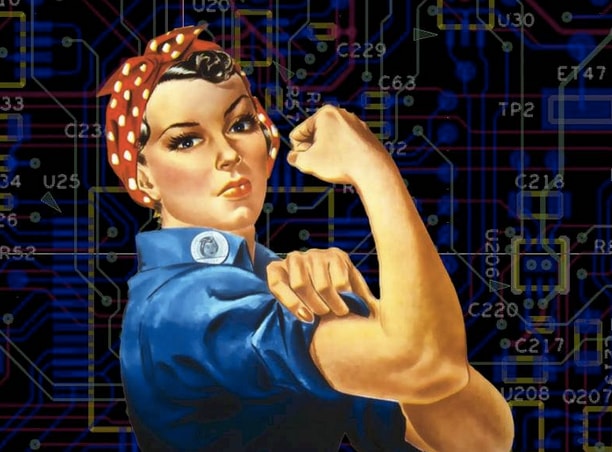STEM is an acronym for Science, Technology, Engineering and Mathematics. If America is to create and keep an economy that leads the nations in these fields, women need to be active participants. Women fill almost half of all jobs in the United States economy, but they hold *less than 25% of STEM jobs. Scholars are exploring the reasons for this gender gap in women in STEM fields, and are seeking ways to facilitate bringing more women into these careers.
What is holding back women in STEM?
Researchers have discovered that there are several reasons for the fact that fewer women than men choose to study the STEM subjects. The most obvious is a lack of interest. Women as a group tend to be more interested in artistic, social, and the conventional studies for women. In a three year study, Seymour and Hewitt, (1997) found that women perceive there are more educational options in the non-STEM studies. Furthermore, a high percentage of female students switched their majors after starting a study in one of the STEM fields. It was also determined that men tend to out-score women in tests of spatial ability, and a good spatial sense is important to success in some branches of engineering and science.
For the women who choose STEM careers and successfully complete their education, proving their abilities in the workplace is a continual challenge. One researcher, Margaret Rossiter, puts forth the idea that women tend to “cluster into certain fields of study.” For instance, even in the STEM fields, women are more inclined to teach and do research rather than work in the general workforce. In the general workforce, women are not as likely as men to be promoted up the ladder of power and prestige. Men tend to promote gender segregation in the lab or office. In another study, it was found that women tend not to help younger women who are entering the workforce from university. Once a women is promoted and respected, she tends to join the general attitude of having greater respect for a man’s skill. The ideal situation would be for both men and women to respect the achievements of a person without regard to their gender.
How do we support women in STEM?
Finally, it must be admitted that there are a multitude of factors that explain the low representation of women participating in STEM careers. There are many more factors than can be presented in a short post. However, there are several strategies that can be employed to support women who are doing their best, given their education and abilities. The most effective strategy is promote equal recognition and rewards for achievements in these fields of study. Companies and universities need to encourage women to persist and excel. Another way to alleviate the stereotype is to introduce role models of successful women in STEM careers. This is the topic of our next post. Additionally, women need to recognize their own value and contributions to the company. With self encouragement, and that of female role models, more women will experience success in Science, Technology, Engineering, and Mathematics.
SMC Pneumatics USA, powered by Orange Coast Pneumatics (OcAire) is an official, certified provider of SMC Pneumatics products and we support women in STEM fields. SMC offers 11,300 general pneumatics products, with over 560,000 variations, engineered to meet applications in every sector of the market, including manufacturing. From Semiconductor to Automotive, Medical to Petroleum, SMC's products are designed to fit your unique requirements.
If you would like more information on our products and services, please visit us at our Website, Facebook, Twitter, LinkedIn, and Google+. We look forward to serving your pneumatics needs.
*References:
-Higher Education Research Institute, Graduate School of Education and Information Studies, The American Freshman: National Norms for Fall 1996, University of California, Los Angeles, 1996.
-Beede, David, Tiffany Julian, David Langdon, George McKittrick, Beethika Khan, and Mark Doms. U.S. Department of Commerce Economics and Statistics Administrations. www.esa.doc.gov. "Women in STEM: A Gender Gap to Innovation", 2009.
-Su, Rong; Rounds, James; Armstrong, Patrick (2009). "Men and Things, Women and People: A Meta-Analysis of Sex Differences in Interests". Psychological Bulletin 135 (6): 859–884. doi:10.1037/a0017364. PMID 19883140.
- Johns, Michael; Schmader, Toni; Martens, Andy (2005). "Knowing Is Half the Battle: Teaching Stereotype Threat as a Means of Improving Women's Math Performance". Psychological Science 16 (3): 175–179. doi:10.1111/j.0956-7976.2005.00799.x. PMID 15733195.

